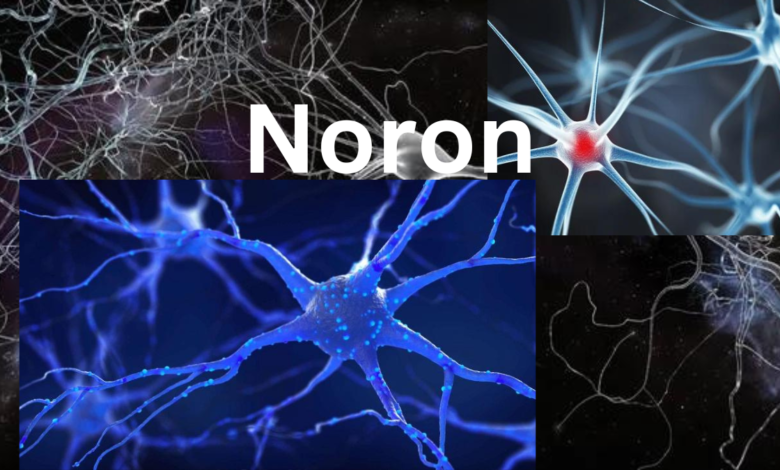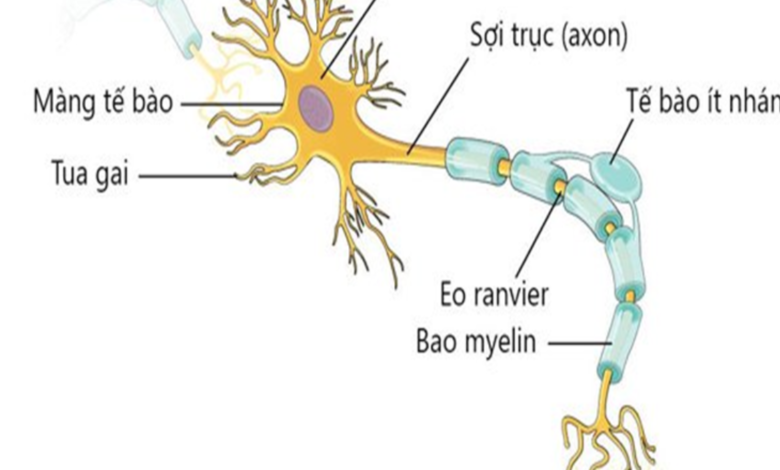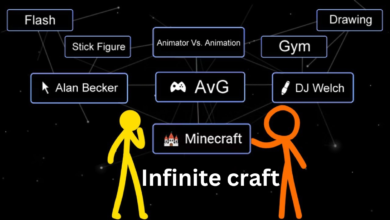Noron: Understanding Its Importance, Functions, and Applications

“Noron” is a term that can cover a wide range of interpretations depending on its context. Whether you’re talking about technology, medicine, or even cultural references, the word carries significance that is often misunderstood or underappreciated. In this article, we will dive deep into the various meanings and applications of “Noron,” breaking down its importance, practical uses, and the broader implications of this concept across different fields. Let’s explore the term from various perspectives, understanding it in all its richness.
What Is Noron? Understanding the Basics

When most people encounter the term “Noron,” they may be unsure what it refers to. This is because “” can relate to different domains. In its most commonly used forms, it’s tied to technological innovation or even medical applications, but its roots and modern interpretations may differ widely.
In the tech industry, “” often relates to the development of neural networks, which are models designed to mimic the human brain’s neuron system. These networks are instrumental in artificial intelligence (AI) and machine learning. On the medical side, Noron can be associated with nerve-related functions or treatments targeting neurological issues.
Despite the differences in interpretation, “Noron” carries one major similarity across the board: it deals with complexity. Whether it’s the complexity of the human brain or the computational processes involved in AI, the term always implies intricate systems and detailed study.
Noron in Artificial Intelligence
The tech industry uses the term “Noron” primarily in discussions about neural networks. Neural networks are a type of machine learning model inspired by the structure of the human brain. Just as the human brain operates through neurons sending and receiving signals to execute functions, neural networks in AI are designed to recognize patterns, make decisions, and process data efficiently.
In this context, “Noron” plays a critical role. Norons (or neurons in AI) are the basic building blocks of these systems. These artificial are interconnected, forming layers that work together to analyze and interpret data. This technology is used in a variety of applications, from speech recognition to autonomous vehicles.
The success of artificial intelligence models hinges on the efficiency of these . The more data they process and the more “learning” they experience, the more accurate their predictions and outputs become. While still relatively young as a field, AI technology is improving rapidly thanks to the ongoing refinement of neural networks and their noron-based architecture.
Noron and Machine Learning
When discussing Noron within the realm of machine learning, it’s essential to understand how the fits into broader systems. Machine learning allows systems to learn from data without being explicitly programmed. In machine learning models, norons are the nodes that receive input, process it, and produce output that drives the system’s learning process.
A key aspect of norons in machine learning is their ability to be adaptive. in neural networks adjust their weights based on experience—similar to how human neurons strengthen connections with repetition and learning. This capacity for adjustment is what makes machine learning so powerful, allowing it to improve over time and deliver more accurate results in complex tasks like natural language processing or image recognition.
The role of norons here cannot be overstated. Without these units to process signals and make predictions, modern machine learning applications would not be able to perform at their current level of sophistication. Nrons, in essence, serve as the brain of AI models, providing the cognitive power necessary to advance technology.
The Origins of Noron: From Neuroscience to Technology
The word “Noron” comes from the Latin root “neuron,” which refers to the nerve cells in the brain and central nervous system that transmit signals. The idea behind modern applications—particularly in AI—is to replicate how biological neurons work. Thus, the term’s origin lies firmly in biology.
Neuroscientists have long studied how the brain’s neurons communicate with each other to perform tasks like thinking, moving, and reacting. The complex web of connections between neurons allows humans to carry out sophisticated cognitive and physical functions. It was the idea of mimicking this biological complexity that sparked the concept of artificial neural networks in the tech world.
Neuroscience remains a critical field of study today, and the connection between the brain’s neurons and artificial is a growing area of interdisciplinary research. Understanding the functionality of neurons helps AI scientists develop better models and more efficient systems for data processing, making Noron an exciting area of innovation that bridges biology and technology.
Noron in Neuroscience
In neuroscience, —spelled as “neurons”—play the starring role in understanding brain function. Neurons are the cells responsible for sending signals throughout the body. This network of cells allows humans and other organisms to think, move, and interact with their environment. Each neuron receives signals from its neighbors and then passes those signals on, resulting in complex thought processes or physical movements.
Neuroscientists study how these neurons work to develop treatments for conditions like Alzheimer’s, epilepsy, and Parkinson’s disease. As more is understood about how neurons operate, treatments and interventions for neurological disorders continue to improve.
The study of neurons in neuroscience is also contributing to technological advancements. For example, brain-computer interfaces (BCIs) are emerging as a direct link between human neurons and computers, allowing individuals to control devices with their thoughts. This connection between in the brain and their artificial counterparts opens new doors for innovative medical and technological solutions.
Noron in Medicine: From Neurological Treatments to Cutting-Edge Therapies
Beyond its influence in technology, the term “Noron” also carries significant weight in the medical field. Neurology, the branch of medicine dealing with the nervous system, frequently revolves around the study of neurons and their health. Neurological disorders like Alzheimer’s, multiple sclerosis, and epilepsy are all connected to dysfunction in the brain’s neurons. Treatments often focus on maintaining or improving the health of these critical cells.
As neuroscience continues to evolve, so too does the understanding of in the brain. This deeper knowledge is helping researchers develop new therapies aimed at repairing or enhancing neuronal function. Stem cell therapy, for instance, offers exciting potential for regenerating damaged neurons and restoring brain function. Advances in drug therapy are also targeting more directly, offering hope for previously untreatable conditions.
Noron in Neurological Disorders
Neurological disorders often occur when norons (neurons) fail to operate properly. Whether due to injury, disease, or genetic factors, noron dysfunction can lead to severe physical and cognitive impairment. For instance, in Alzheimer’s disease, the neurons in the brain gradually die, leading to memory loss, confusion, and other cognitive difficulties.
In multiple sclerosis (MS), the protective coating around neurons (called myelin) is damaged, disrupting the signals that send to one another. This can lead to symptoms like muscle weakness, difficulty walking, and coordination issues.
By understanding how function and why they fail, medical researchers are developing new treatments aimed at preserving neuron health. For example, research into neuroplasticity— the brain’s ability to rewire itself—suggests that may be more adaptable than previously thought, offering hope for new therapies that can help regenerate damaged brain tissue.
Noron and Regenerative Medicine
One of the most exciting developments in the medical field related to is regenerative medicine. This branch of science focuses on repairing or replacing damaged tissue and cells, including neurons. Stem cell therapy is a particularly promising area, as it has the potential to regenerate lost neurons and restore brain function in patients with neurological disorders.
In cases of spinal cord injury, for instance, scientists are experimenting with ways to stimulate regrowth, which could potentially allow paralyzed patients to regain movement. Similarly, in conditions like stroke, where part of the brain loses its function due to neuron damage, new treatments are being developed to regenerate norons and restore the brain’s normal activity.
The future of noron research in medicine looks incredibly promising, offering hope for people suffering from conditions that were once considered untreatable.
Noron in Everyday Life: Impacts You Didn’t Know About
Although the term “Noron” is usually associated with complex scientific and technological fields, it also impacts our everyday lives in ways we may not realize. From the apps we use on our phones to the self-driving cars of tomorrow, are quietly working behind the scenes, helping machines “think” more like humans.
AI-powered tools like virtual assistants (e.g., Siri or Alexa) rely on noron-based neural networks to understand our speech, learn our preferences, and improve over time. Similarly, recommendation engines on platforms like Netflix or Spotify use machine learning models with -like structures to predict what we might like based on our previous behavior.
Noron in Consumer Technology
Many of the consumer products we use daily are powered by norons in one way or another. For example, AI algorithms that recommend products or content to you on social media or shopping websites rely on neural networks, with norons analyzing your previous interactions to provide personalized suggestions.
The growing trend of smart homes also utilizes noron-like technology. Devices like smart thermostats and security systems use machine learning algorithms to anticipate your needs, such as adjusting the temperature based on your previous preferences or detecting unusual activity around your home.
In transportation, norons are playing an increasing role in the development of autonomous vehicles. Self-driving cars rely on AI and neural networks to “learn” the rules of the road, recognize objects, and make split-second decisions based on the data they receive from sensors and cameras.
Noron in Healthcare Apps and Wearable Devices
In addition to powering entertainment and convenience tools, norons are also becoming critical in healthcare applications. Wearable devices like smartwatches and fitness trackers use machine learning algorithms to monitor your health data and provide insights into your daily activities, sleep patterns, and heart rate.





